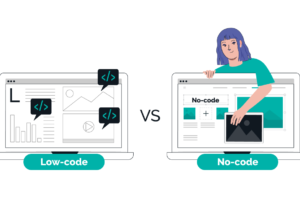In the ever-evolving world of software development, traditional approaches often fall short of meeting the dynamic needs of businesses and users.
Enter agile software development, a flexible and collaborative methodology that has revolutionized the industry.
Agile development emphasizes adaptability, continuous improvement, and customer satisfaction. In this blog post, we will delve into the fundamental principles, key practices, and benefits of agile software development.
By understanding the core concepts of agility, you can harness its power to drive successful software projects in today’s fast-paced and competitive environment.
The Agile Mindset:
At the heart of agile software development lies a shift in mindset. Unlike the rigid and sequential approaches of the past, agile embraces change and values individuals and interactions over processes and tools.
Agile teams are empowered to make decisions and work collaboratively to deliver high-quality software. This shift in mindset enables them to respond quickly to changing requirements and uncertainties.
Iterative and Incremental Delivery:
Agile development embraces iterative and incremental delivery. Rather than aiming for a big-bang release, agile teams break the project into smaller increments called sprints. Each sprint typically lasts two to four weeks and focuses on delivering a working piece of software. This iterative approach allows for continuous feedback, validation of assumptions, and course correction, resulting in a more responsive and valuable end product.
The Product Backlog:
The product backlog serves as the backbone of agile software development. It is a dynamic and prioritized list of user stories, bugs, and other work items.
The product owner, in close collaboration with stakeholders, continuously refines and reprioritizes the backlog based on changing business needs and feedback.
This iterative backlog management ensures that the team is always working on the most valuable and relevant items, driving customer satisfaction and business value.
Agile Frameworks and Practices:
Agile methodologies, such as Scrum and Kanban, provide frameworks and practices to support agile principles. Scrum, for instance, defines specific roles (product owner, scrum master, development team), events (sprint planning, daily stand-up meetings, sprint review, and retrospective), and artifacts (product backlog, sprint backlog, burndown chart). These frameworks promote transparency, collaboration, and continuous improvement, fostering effective project management and delivery.
Continuous Integration and Continuous Delivery (CI/CD):
Continuous integration (CI) and continuous delivery (CD) are vital practices in agile software development. CI involves frequently and automatically integrating code changes to detect integration issues early.
CD focuses on automating the release and deployment processes, allowing for frequent and reliable software delivery to production. These practices streamline the development pipeline, minimize risks, and enhance software quality.
Benefits of Agile Software Development:
Agile software development offers numerous benefits. It enables businesses to deliver value early and frequently, providing a competitive advantage and better responsiveness to market demands. Agile fosters transparency, collaboration, and effective communication among stakeholders and development teams.
The iterative and adaptive nature of agile allows for flexibility in responding to changing requirements and priorities. Finally, agile promotes a culture of continuous improvement, encouraging teams to learn, innovate, and evolve, leading to higher-quality software and increased customer satisfaction.
Conclusion:
Agile software development has transformed the way projects are managed and software is delivered. By embracing agility, organizations can adapt to the ever-changing needs of the market and customers.
Agile’s iterative approach, collaborative mindset, and focus on continuous improvement enable teams to deliver valuable software more effectively and efficiently. In this dynamic and competitive landscape, agility is no longer an option but a necessity for success in software development.







